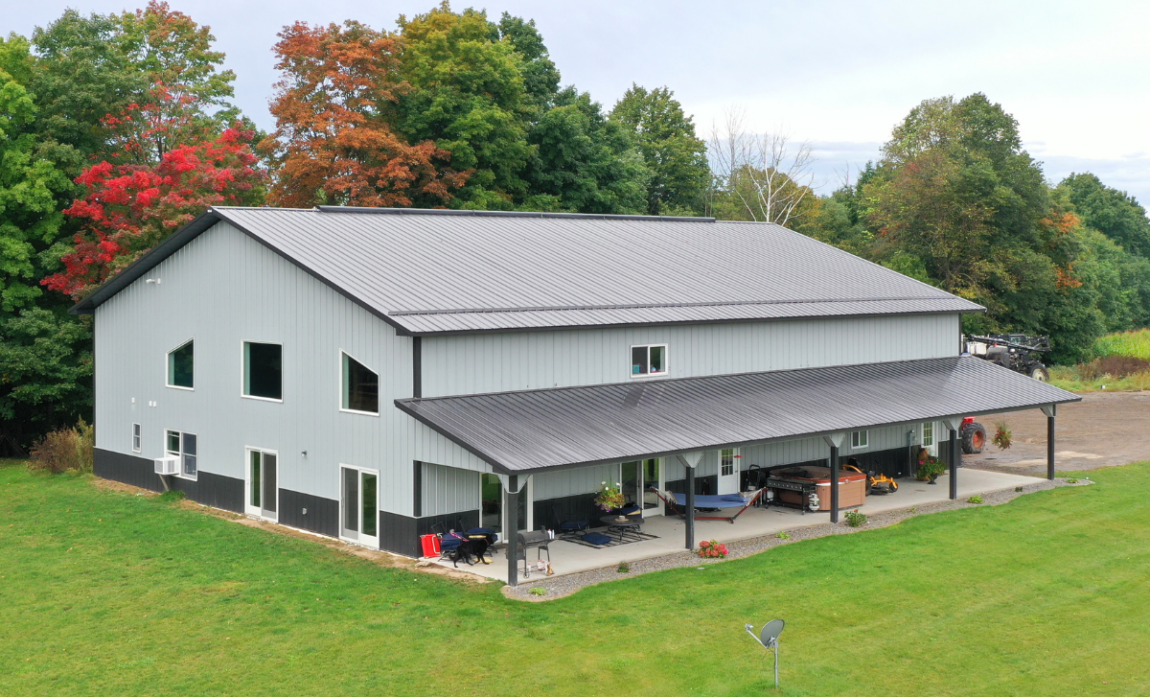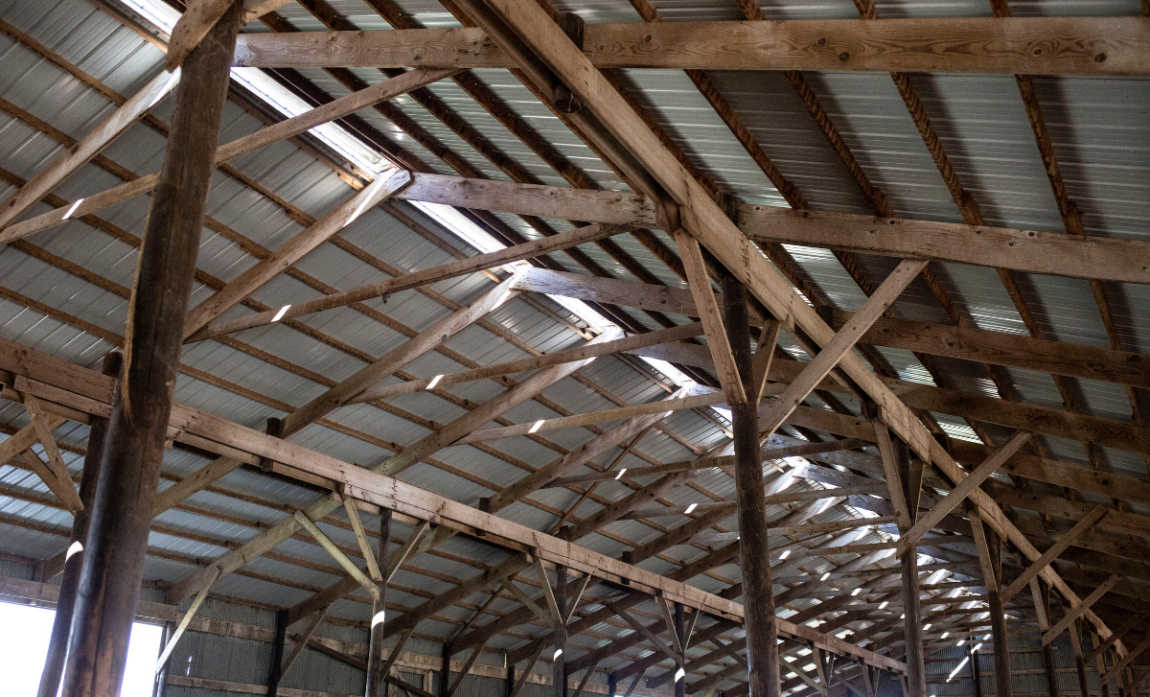Agricultural pole barns are downright vital for a range of farm-related needs. If you’re planning to build one, you’ll want to consider both your immediate and long-term needs when you decide on the pole barn’s dimensions and building features.
To help you plan more effectively, we share six tips from pole barn builder Dwayne Martin, owner of Martin Building Systems.
But first, let’s briefly look at the many ways agricultural pole barns can be used.
The Many Possible Uses for an Agricultural Pole Barn
A pole barn, also known as a post-frame building, is an excellent option for farmers and ranchers. Among other advantages, this type of building is more durable than other options and typically involves a more efficient and cost-effective construction process.
Could a pole barn be right for your agricultural needs? Let’s take a brief look at the possibilities:
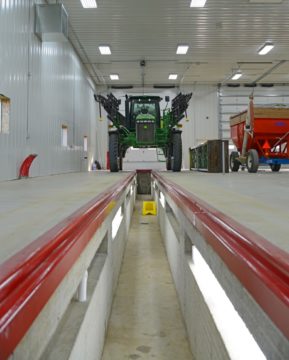
Heated Machine Shops and Farm Equipment Storage Buildings
Tractors, combines, and other implements require high ceilings, big doors, and lots of clear-span space. But you might also want enough room for your pick-ups and side-by-sides—plus space to work on your equipment all year long. And don’t forget about an office. These are all needs (or wants) that can be met with a pole barn.
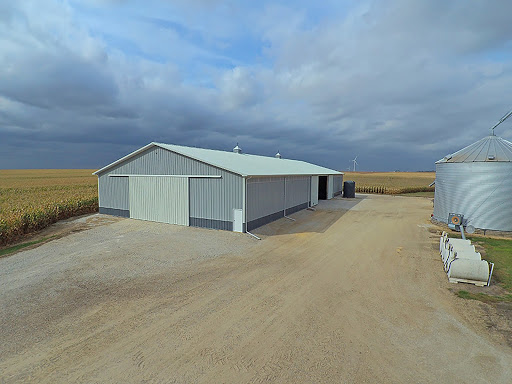
Cold Storage Buildings for Crops, Equipment, and Other Farm Items
When you need a weather-tight building to keep equipment or to store seed, hay, grain, or other crops, a pole barn is an excellent choice, especially when it’s engineered for easy access and optimal work efficiency.
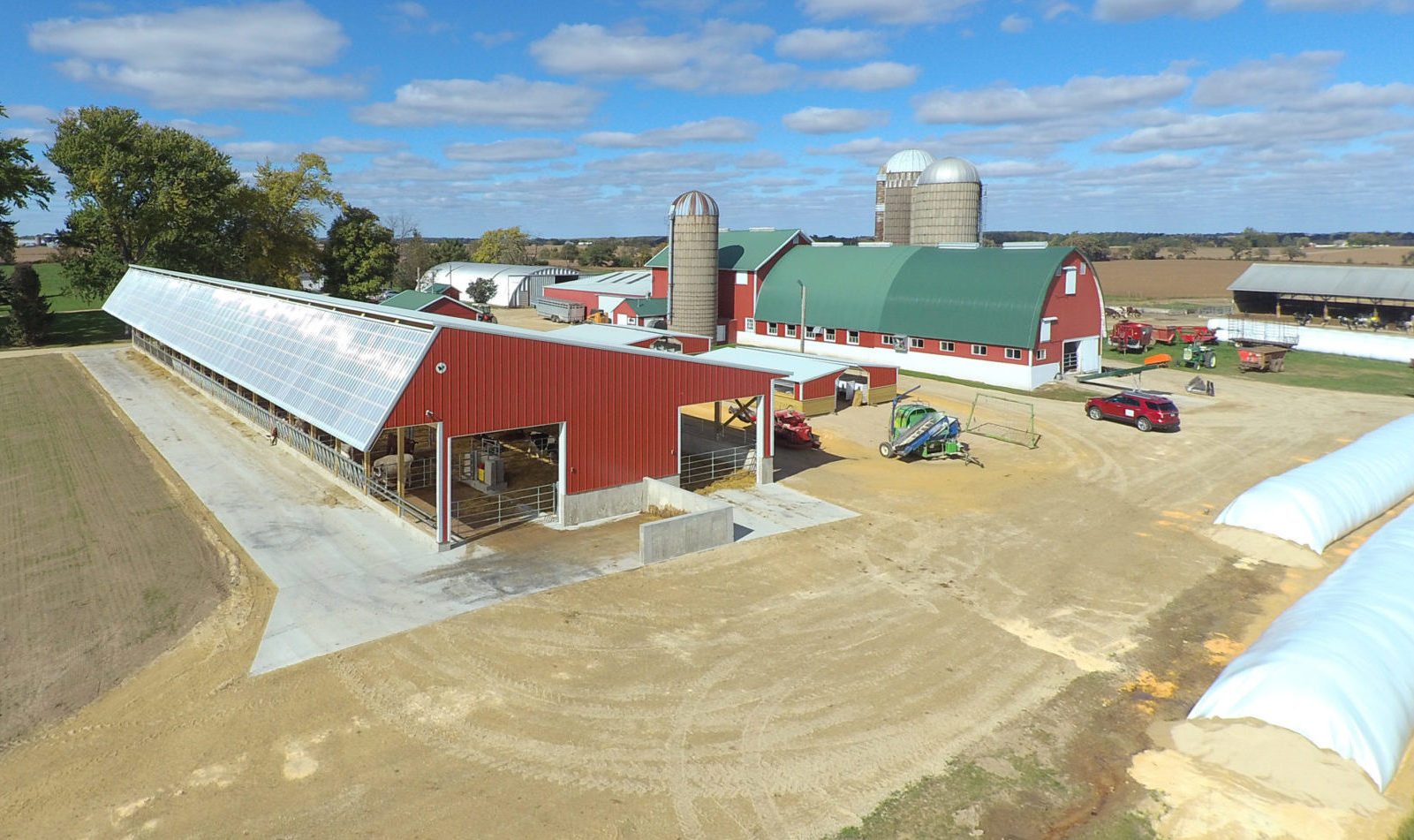
Livestock Barns And Confinement Buildings
Protecting cattle from the harsh elements, whether it’s the sweltering sun or the freezing cold, is critical. A pole barn is ideal not only for cow-calf ranches and similar operations but also for sheep, swine, and poultry. And if you have avid 4-H’ers, a pole barn is the perfect building for keeping—and tending to—those prize-winning animals.
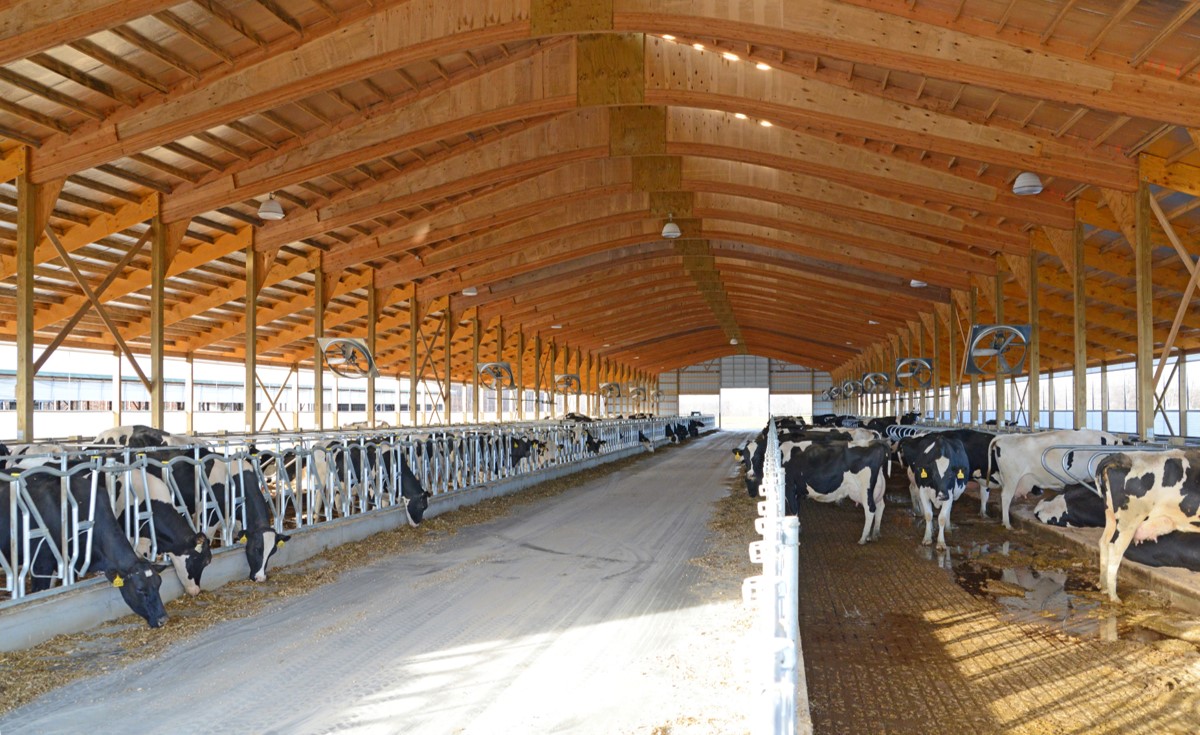
Dairy Buildings
The health and productivity of dairy cows depend on many variables, including the building they’re housed in. A carefully designed pole barn can optimize herd health and maximize milk production.
Okay, now let’s turn to those tips to help you plan for an agricultural pole barn.
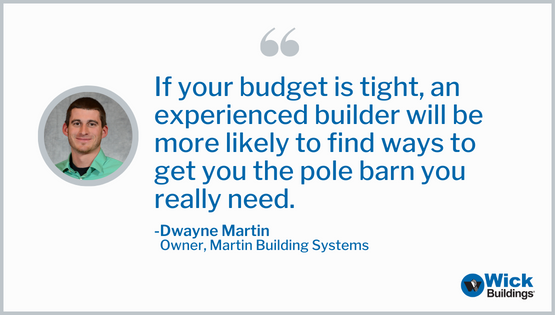
1. Establish Your Budget and Your Pole Barn’s Main Uses Up Front
Having a clear idea of how you’ll use your agricultural pole barn will be crucial for planning a building that can meet your needs and stay within your budget.
Pole barn builder Dwayne Martin says when he first talks to a prospective customer, his initial questions are intended to establish the end use of the building. Then it’s on to finding out what they’re imagining for the pole barn’s size.
With these building basics established, Martin says he’s usually able to throw out some ballpark numbers. “I may pull up images of comparable buildings on my phone just so they have an idea of what the cost per square foot could be for a similar building.”
Then it’s reality check time: Is the potential cost within the person’s budget?
“You don’t want to be shy about your budget,” says Martin, which is why you want to talk with a reputable pole barn builder you can trust. “If your budget is tight, an experienced builder will be more likely to find ways to get you the pole barn you really need.”
2. Build for Today’s Needs AND Tomorrow’s Growth (Especially for Doors)
Farmers and ranchers are usually thinking a lot about what the future will bring for their operations. Martin says it’s important to bring that mindset to your pole barn planning as well.
As a general rule of thumb, it’s smart to build bigger than you need at the moment. More specifically, Martin says that’s particularly true when it comes to your pole barn doors.
Consider the following insights on doors:
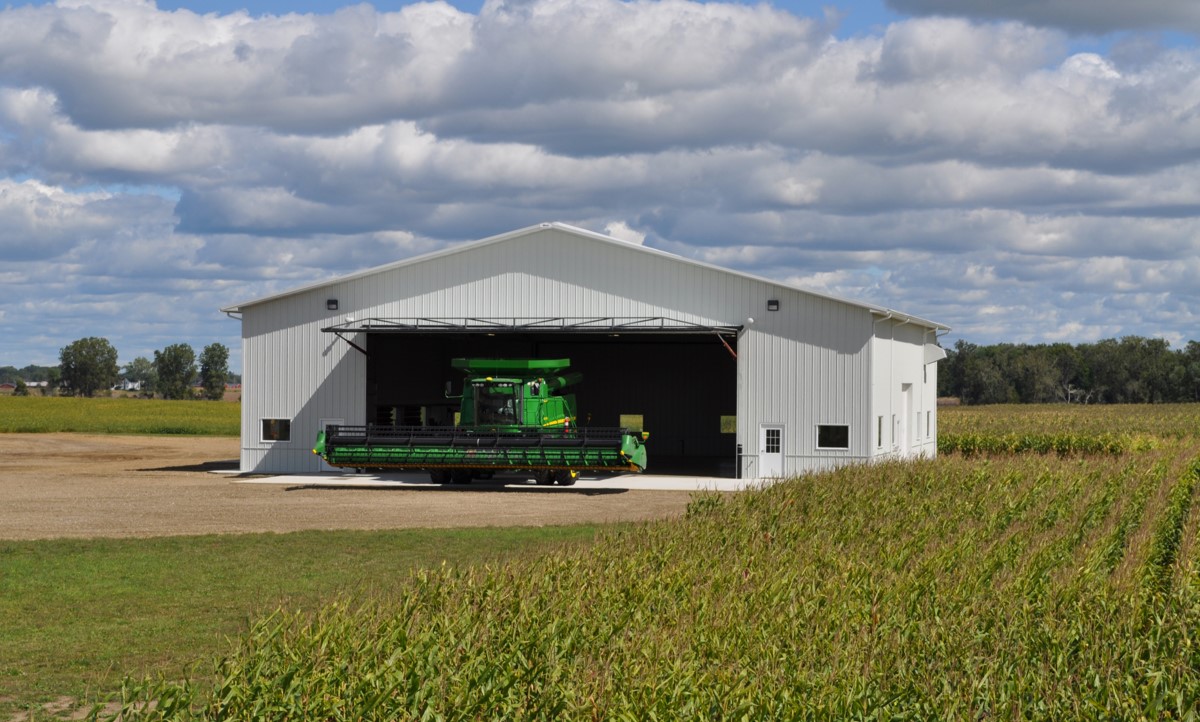
Make sure your big doors are big enough for the future. If you want to drive, for example, your combine right into your shop, that will definitely affect the decisions you make for your door size and your overall building.
“Thirty years ago you could get pretty much anything through a 12-foot-tall door,” says Martin. “Now, there’s machinery you can’t even get through a 14-foot-tall door.”
He says a lot of his customers today opt for a door that’s 16 feet tall. But he also estimates that about a quarter of them go with an 18-foot-tall door. “That may be overkill right now, but it probably won’t be in 10 years.”

Consider a hydraulic door because of its overall benefits. Martin says a hydraulic door works great for moving large machinery in and out.
Although it’s generally more expensive, it also has less moving parts and therefore is more durable and requires less maintenance than other types of doors.
On top of that, it opens outward, which means it won’t limit the interior space of your pole barn—plus, it creates a nice canopy when it’s open.
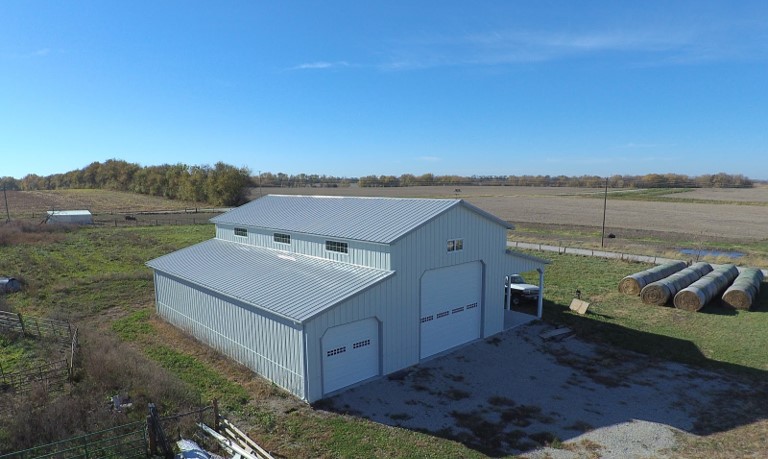
Don’t forget about a smaller door for other vehicles and equipment. Of course, not all your farm equipment is as big as a combine. For pickups, skid steers, and other smaller equipment, it’s a good idea to include a smaller door.
“That way you won’t have to open up that huge door just to drive your pickup in or out,” says Martin.
He also says to keep these two things in mind:
- Be sure to position your smaller door so that it won’t conflict with the large equipment you’ll be pulling in through your large door.
- Since you’ll likely have an interior height of 16 or more feet, you’ll want to have the track for your smaller door go vertically up the sidewall. If you have it turn horizontally, it’s going to jut into your machine shop space and potentially be in the way.
3. Give Aesthetic Features Careful Thought
What your pole barn will look like from the outside becomes really important if, for instance, it’ll be near your house or needs to be visually compatible with other buildings nearby.
Martin says to make sure you explain how you want your pole barn to look in your initial discussion with your builder.
Also, be aware that certain aesthetic choices can affect the overall performance of your building. Here are some factors to keep in mind when it comes to enhancing your pole barn’s appearance:

Overhangs are useful and even necessary in some cases. Extended overhangs look nice. But they can also add shade, create an area for outdoor seating, and keep rain and snow away from the walls and foundation. Also, if you plan to have a ceiling inside your pole barn, you’ll actually need overhangs to vent the attic space.
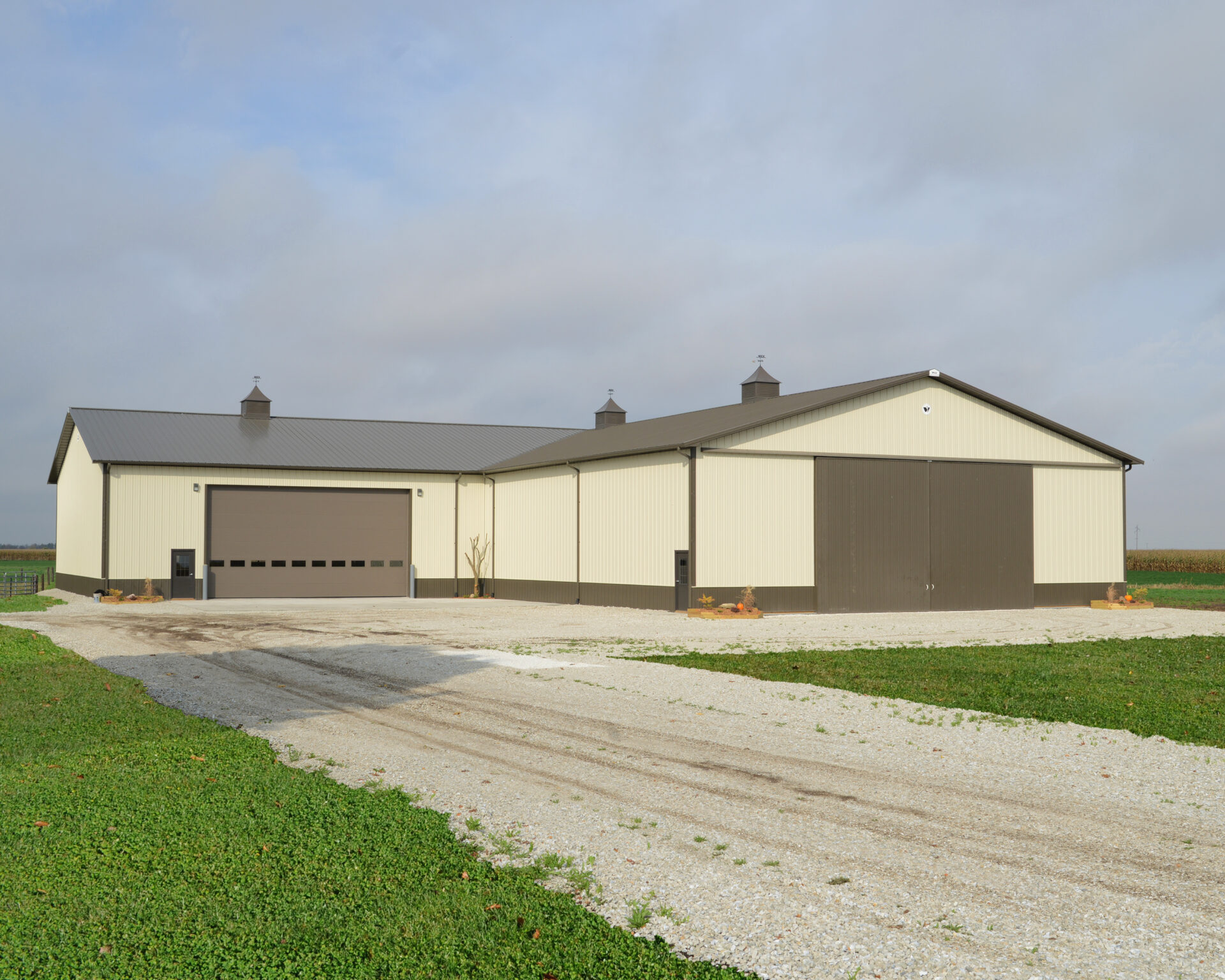
Wainscoting is attractive and can reduce repair expenses. Most agree that wainscoting looks great, but it has another benefit. If you dent or in some other way damage a section of wainscoting, you can likely replace it with a 3-foot-tall piece. With a regular steel wall, you would have to use an entire 20-foot-tall section of steel (or bigger) for replacement.
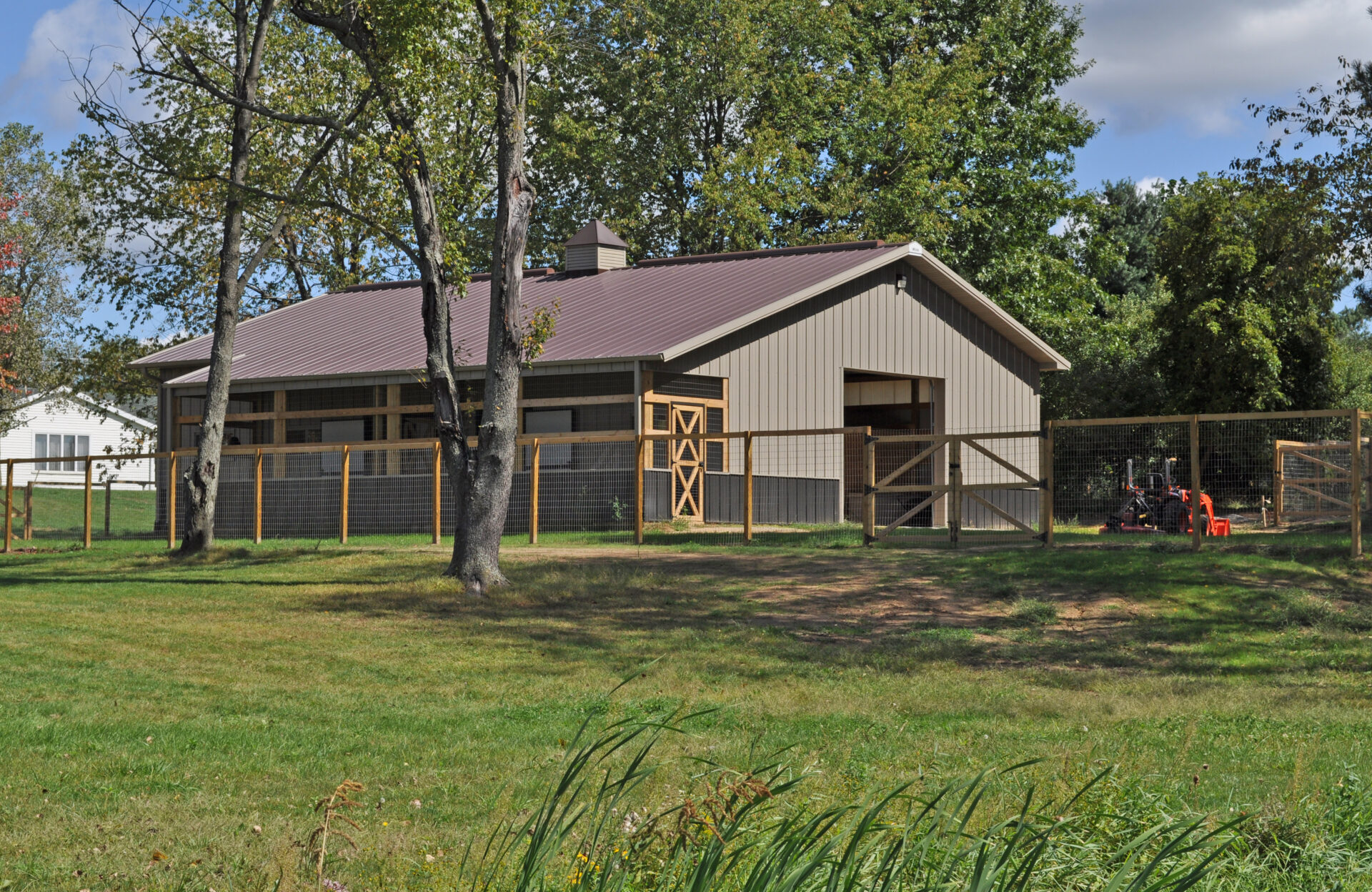
Cupolas are for more than just looks. Situated on the roof ridge, cupolas can be an attractive touch on any type of pole barn. But they can also serve functions like adding ventilation and allowing for more natural light.
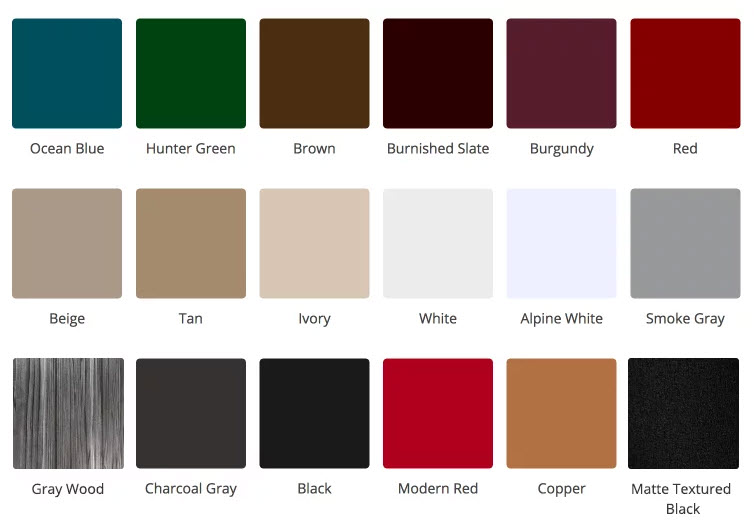
Paint color options are plentiful. Familiarize yourself with possible pole barn paint colors. You may be surprised because there’s been an explosion of new pole barn color options. Also, don’t forget to ask if there’s a warranty on your paint.
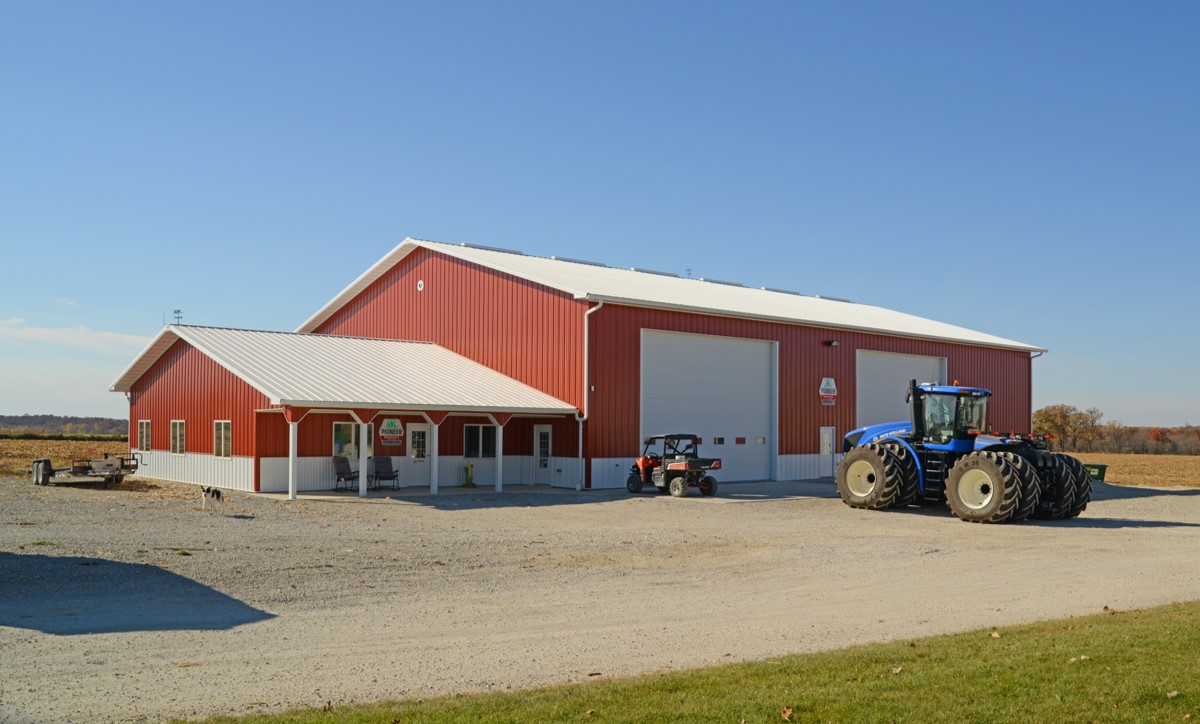
4. Consider an Office Space for Your Ag Business
Since you’re running a business, you may want to include an office space for your pole barn.
Depending on your needs and your budget, you could opt for something on the simpler side within the main pole barn area. In that case, Martin says customers often have a storage loft built above the office area to maximize space use.
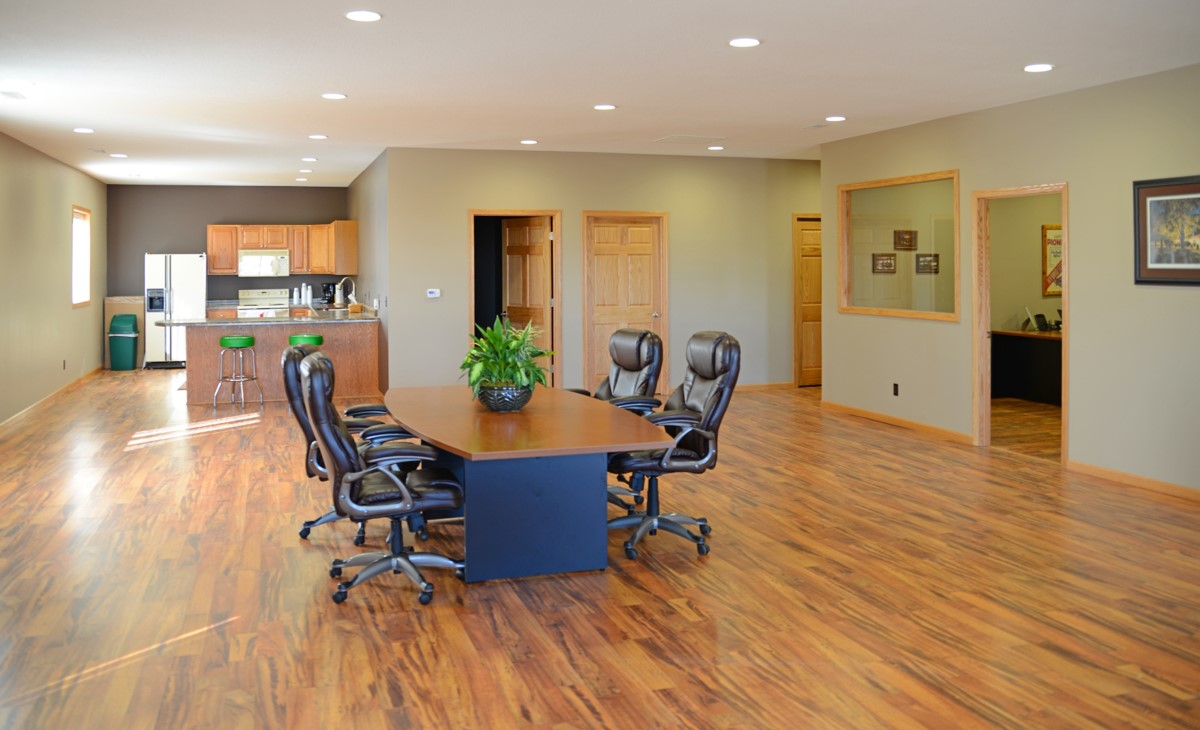
Or, you could have an office wing built that includes, for example, a kitchenette, a conference table, a bathroom, and a large separate office, like the image above.
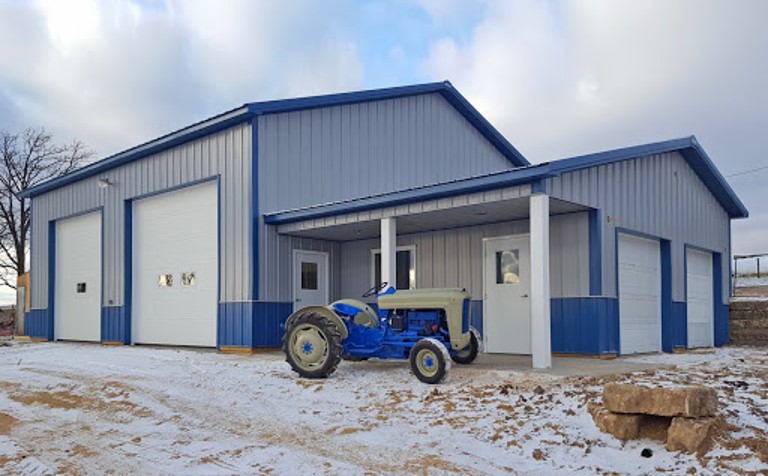
5. Think Through the Heating Possibilities for Your Pole Barn
Do you need to heat your pole barn? Martin says it all comes down to what you plan to store in your building and, perhaps more importantly, what you plan to do in it when the weather turns cold.
For instance, will you be working in it nearly every day, all winter long, or only occasionally? If you’re seriously considering a heated pole barn, keep these points in mind:
Radiant floor heating is for maximum comfort. Yes, there’s an efficiency benefit to radiant floor heating, particularly when you have to open that big shop door in cold weather. However, Martin says by far the biggest benefit of heated concrete is the sheer comfort it brings. That’s especially true if you’ll be on a creeper fixing equipment during the winter months.
But that comfort isn’t cheap. Martin says, “I wouldn’t say it’s necessarily going to pay for itself over the years, but in my experience, everyone that’s ever done a heated floor in their pole barn loves it and never regrets it.”

A radiant propane tube heater can be a more affordable option. If a heated floor is beyond your budget, a propane-powered tube heater can be the next best thing. It heats up objects around it, explains Martin, so you won’t immediately lose all your heat when opening your big shop door.
Forced air from an HVAC system is “the worst.” In terms of efficiency, Martins says, “Forced air would be the worst. So if you open that shop door, the heat is gone.”
6. Match Insulation to Your Building’s Uses (And Don’t Put Off Installation)
Insulation isn’t a one-size-fits-all construction step. What goes in—and what goes on—inside your pole barn should determine your insulation decisions.
Make sure you discuss your insulation needs with your builder so that you choose the appropriate R-value. This indicates the insulative properties of the material used. The higher the R-value, the higher the insulation capacity. (For more info, be sure to check out How to Insulate Your Pole Barn.)

Also, don’t forget about “house wrap” underneath the steel, such as Kimberly-Clark BLOCK-IT® House Wrap technology. This provides an additional layer of water- and air-infiltration protection. It also creates a needed adhesion surface for spray-foam insulation.
If you’re thinking insulation is a good idea, Martin cautions against delaying installation for the future.
“Based on my experience, the chances of putting insulation in later are pretty slim,” he says. “After you fill your shop up and have shelves built and stacked with stuff, installation becomes a much bigger headache to do—and it’s only going to cost more later.”
For more agricultural pole barn ideas, be sure to check out 33 Farm Building Ideas for Implement Storage, Animal Confinement, and Other Agricultural Needs.
Make the Next Move: Start a Conversation with an Experienced Builder
If you’re serious about a new pole barn, then you’ll want to start the process soon because these projects can take longer than you think.
Building an agricultural pole barn is no small undertaking. The right design, the appropriate materials, and smart construction practices are essential for a functional, durable, and cost-efficient building you’ll love for years to come.
To learn more about having an agricultural pole barn built, be sure to contact Wick Buildings.


